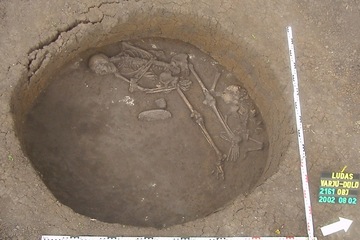
‘Home is never too far away when you’re holding a gaelic football’
October 22, 2014
Ancient Human Skulls Reveal When Europeans Could Drink Milk
October 22, 2014PARIS—France is Europe’s first nation of immigrants, home to a growing black population, and the continent’s largest populations of Jews and Muslims. Yet it remains officially and absurdly “color-blind.”
The ban on the collection of ethnic and racial statistics is reaching dangerous proportions. Demagogues like the National Front’s Marine Le Pen or “maybe Vichy General Petain wasn’t such a bad guy” polemicist Eric Zemmour spout populist lies about so-called “unassimilated minorities” and get away with them.
Black justice minister Christiane Taubira must endure being constantly compared to a banana-munching monkey. A center-right parliamentarian keeps his job despite being convicted for inciting racial hatred for comparing soccer hooligans to descendants of slaves (link in French).
The saddest aspect of France’s statistical blindspot, stemming from a noble but outdated liberal republican adherence to the notion of universal citizenship, is that when a good story about a French minority group comes along, no one can be entirely sure of its basis in empirical fact.
Le Monde Journalist Elise Vincent caused a stir in Paris with the publication of her weekend M Magazine cover story (pdf, link in French) profiling the “new black elite” who have emerged in France.
The cohort of successful and wealthy black people is, according to Le Monde, uniting young 25- to 40-year-olds who are ambitious entrepreneurs, professionals, corporate executives, and creatives. This is an upwardly-mobile class that prefers success in the business, communications, style and fashion worlds rather than aggressive, politically-focused militancy.
The nouvelle élite noire hail not only from upper class families of diplomats but from the children of recent immigrants and the ranks of foreign students who through their own hard work and initiative have risen in a range of fields.
Through networking groups like Efficience with its “Le Gotha Noire” or “Who’s Who” of black French people, entrepreneur clubs, and networking dinners, the group is rapidly taking on top spots across the professional spectrum.
Vincent’s dispatch showed an unusually positive side to the black experience in France—one too often seen exclusively through the prism of crime and poverty.
But she herself cautions that the few official figures available reveal disturbing disparities.
More than one-third of households in which the family head is an immigrant from Africa lives in poverty, compared to 13% of the general population. Forty percent of heads of African households say they have been victims of discrimination, a figure that is up to 20% higher than other visible minorities.
Many applauded Le Monde’s “revolutionary” depiction of the new generation of black French people. Or as the French-American Foundation put it: “while this would seem like a non-event in the United States, talking about race in France remains sensitive, and the very term race makes many Frenchmen uncomfortable.”
The glowing portrait was nonetheless criticized as “naïve” and unrepresentative of the experience of being noir in France by some participants in a debate at the French-American Foundation in New York.
Stonybrook University sociology and Africana studies professor, Crystal Fleming, who spoke at the debate says that the Le Monde approach somewhat obscured the prevalence of what she startlingly calls “French white supremacy.”
“There is certainly a French black elite, but it is old—not new. There have been ‘elite’ Afro-descended people in France since the days of slavery and colonialism,” Fleming, who is working on a book on colorblindness in France, told Quartz. She cites General Dumas, whose Pulitzer-Prize winning biography The Black Count, written by Tom Reiss, is being turned into a film.
France’s black population, which is much smaller than the US’s, grew significantly only after World War II. It is the only nation to have declared slavery, which was never practiced in metropolitan France and was first abolished by the revolutionaries in 1794 before being reinstated then definitively outlawed in 1848, a crime against humanity.
But Fleming is right that the old-fashioned approach of trying to effect social change without using race and ethnicity-based statistics is not working. She says,
“Yes, I met and interviewed individuals of the same profile as described in the article, but it is important to know two things: this ‘elite’ has a history and their presence in France is part of French history. Secondly, there are not sufficient data that can provide detailed and precise information about the changing demographics of France’s population according to race, ethnicity and class.”
The government would need to collect ethno-racial statistics to determine demographic transformations among black people and other groups as well as the impact of anti-discrimination policies. France is believed to be home to an estimated three to five million black people or possibly as high as 7.5% of the population.
A solution to the statistical vacuum could mercifully be in sight as pressure builds on the French state to reverse its historically color-blind approach.
In 2012, then interior minister, now prime minister, Manuel Valls said he was open to changes to the ethnic statistical ban “to better know the reality of our country,” however he has not returned to the subject.
The Institut Montaigne á Paris, a liberal think tank, recently published a report (link in French) urging reforms so that the level of diversity could be measured in business, public service, and universities:
“The lifting of the statistical invisibility (of France’s ethnic minorities) has become a necessity. This French taboo has very heavy consequences…the difficulty of measuring ethnic diversity constitutes a major obstacle in the fight against discrimination.”
Let’s hope the reformist prime minister Valls is still listening.
We welcome your comments at ideas@qz.com.


